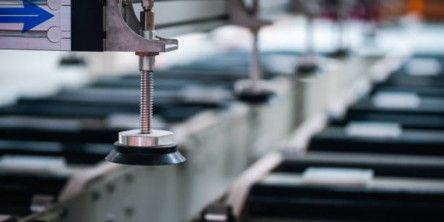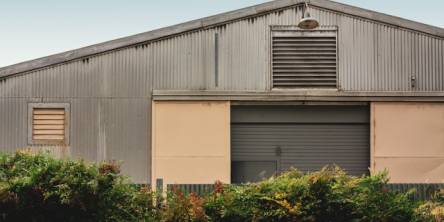Structure and Polytypism of Silicon Carbide
Silicon carbide (Silicon carbide) has been used in industrial applications since last century. The methods of synthesizing Silicon carbide were being introduced in 1891 by Acheson and in 1884 by Cowless. Silicon carbide has been renowned as a significant structural ceramic material. It has exceptional grouping properties, such as strength retention to high temperatures, outstanding oxidation resistance, very high wear resistance, high thermal conductivity and excellent thermal shock resistance. The combination such properties is determined by highly covalent chemical bonding among carbon and silicon atoms. The basic Silicon carbide structural unit is a covalently bonded major co-ordinated tetrahedron, either CSi4 or Silicon carbide4. The four bonds attached to the neighboring bonds have an entirely covalent character. This bond creates a difference in electronegativity of the carbon and silicon atom. The minute positive charge on the Silicon atom, ensuing in the ionic contribution can be also deduced from the transfer of the Ka doublet in the X-ray discharge spectrum in Silicon carbide.
Nevertheless, the most extraordinary feature of Silicon carbide crystal arrangement is its polytypism. The crystalline structure displays diverse one dimensional sequence devoid of any disparity in stoichiometry. Even though a wide variety of Silicon carbide polytypes are known, it has become a practice to refer to all non cubic structures as a Silicon carbide and the cubic polytype as b Silicon carbide. The Silicon carbide crystals become visible in various numerals of modifications that have either trigonal or hexagonal equilibrium. All crystallographic modifications of Silicon carbide have very similar structures. They all comprise of the same layers vertical to the trigonal or hexagonal axes. However, every structure has its own recurrence space ensuing from a trait variation of the stacking of matching layers. The CSi4 or SiC4 tetrahedral are arranged in a unique way that all atoms lie in equivalent planes on the nodes of hexagonal networks.
The distance of the carbon plane from the neighboring silicon planes is in the ratio of 1:4 in relation to carbon-carbon distance. This creates an effect with the symmetry alignment at right angles which creates a polar plane. In this overall structure, the carbon atom lies above the center of a triangle formed by three adjoining Si atoms of such a hexagonal silicon network. The fourth Si atom of second layer, linked to the carbon atom has the same projection as the carbon atom. In the third silicon layer the atoms are connected in one-sided positions. The center of the triangle is not enclosed by the projections of the atoms of the carbon layer. The same consecutive layers of tetrahedral are oriented either anti parallel or parallel.
The eccentric character of the tetrahedral structure requires a series of the type CACA. Consequently for SiC two stacking operations exist: rotation translation and layer translation. For machining Silicon Carbide, additives can be added to the layer before its sintering. This means the layers selected A and A’ have exactly the same spatial display but are twisted and rotated. For instance, the high temperature SiC polytype has a hexagonal structure and a five layer repeat in the c-direction. The stacking series of silicon polytype results in a structure which can be obtained from the cubic polytype by adding rotating twin boundaries after every three layers.
A repeating unit is formed by different structures that arise due to the characteristic succession of tetrahedral layers. Diverse polytype structure can be obtainable as polar frameworks created by the layers of CSi4 tetrahedral in which have one apex for all the layer planes. These tetrahedrals are connected through the corners to assure the four-fold co-ordination at any point of the structure. Therefore, they are arranged in the same way as spheres in the close filled structures. The stacking series can be described by the commonly known ABC notation. As both simple hexagonal and cubic stacking sequences are found in SiC, the two stacking types can also occur in more intermixed and complex forms. This yields a variety of ordered and larger period stacking structures.
The tetrahedral layers series can be easily visualized in models, known as tramline structure diagrams, by taking into account for zigzag sequence of tetrahedral planes. The zigzag layers of this crystalline structure are proposed by a notation which specifies the number of consecutive layers without rotation.
Similar Articles
CNC Machining has emerged as a vital technique in the current production process, as it provides an efficient and accurate means of manufacturing items with complex geometries. This technology is applied across aerospace, automobile, and medical devices manufacturing fields, and various other industries.
Find out what to look for in a reliable CNC machining manufacturer, from quality assurance and advanced technology to customer service, for efficient project success.
Save on pipe relining costs with smart planning. Learn how to reduce expenses through targeted repairs, material choices, off-peak scheduling, and competitive bids.
When it comes to metalworking, the quality of your equipment can make a significant difference in the efficiency and accuracy of your projects. Among the essential tools in any metalworking shop is the sheet metal brake, which plays a crucial role in bending and shaping metal sheets
Discover the latest design trends and innovations in metal table legs, enhancing style and functionality for modern interiors.
In the dynamic nature of the industrial sector, high-efficiency gate valves play a crucial role in the flow control system. Leading valve suppliers and globe valve suppliers are always engaged in the development of this technology to enhance the efficiency of the equipment.
When it comes to constructing a metal building, whether it's for industrial, commercial, or residential use, choosing the right metal building company is crucial. Metal buildings offer durability, flexibility, and efficiency, but only if they are designed and constructed correctly.
Discover how ERP systems streamline procurement in manufacturing, enhancing efficiency, reducing costs, and improving supplier management.
In today's fast-paced manufacturing landscape, the use of high-quality bonding solutions, such as industrial adhesives, has become increasingly crucial to ensure product quality, efficiency and competitiveness.









